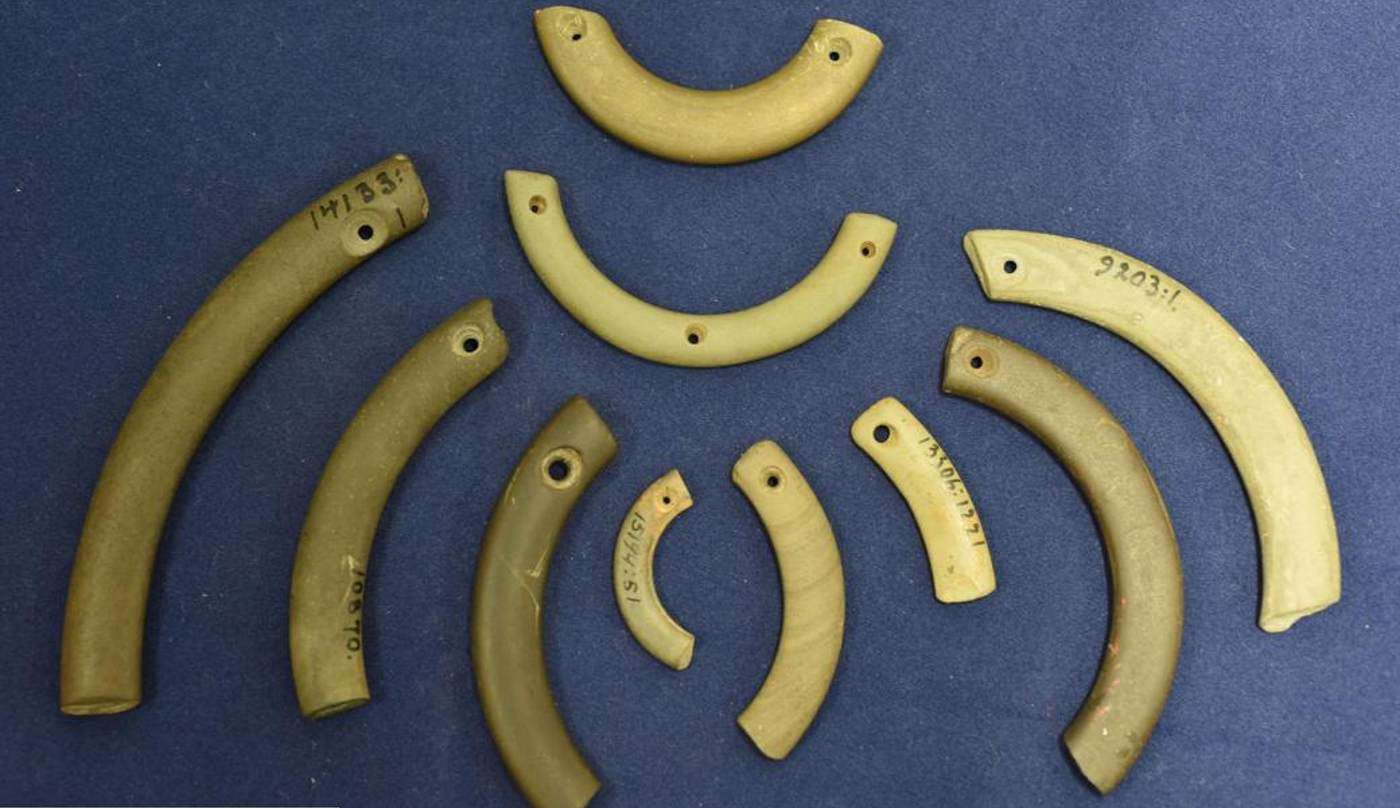Danish Company Creates Children's Book to Make Ukrainian Refugees Feel at Home - And it's Adorable (LOOK)
A Danish company Mediabrands Content Studio created a free children's book to welcome Ukrainian refugees-it's warming hearts and going viral.

Roughly 6,000 years ago, hunter-gatherer communities in northeast Europe produced skillfully manufactured slate ring ornaments in great numbers. While these ornaments are commonly referred to as ‘slate rings', they were rarely used as intact rings. Instead, the ornaments were fragmented on purpose, using pieces of rings as tokens. These fragments were further processed into pendants.
The fragments have most likely served as symbols of the social relations of Stone Age hunter-gatherers.
As most archaeological material is found in a fragmented state, the phenomenon has been considered a natural consequence of objects' having been long buried underground. However, according to Postdoctoral Researcher Marja Ahola from the University of Helsinki, not all objects have necessarily been broken by accident.
Instead, it is possible some were fragmented on purpose as part of maintaining social relations, bartering, or ritual activities. The research now completed has demonstrated that a substantial number of ornaments have been found in extensive and central locations. As some of the ornaments originate in Lake Onega region and have been transported to Finland through a widespread exchange network, it is possible that they symbolize the connections established within the network.
By matching pieces of slate ring ornaments, analyzing their geochemical composition and investigating traces of use and manufacture in the objects, a research group at the University of Helsinki and the University of Turku demonstrated that the ornaments had not only been worn, but also intentionally broken.
Because fragments from the same ornament were found in two different locations, it is possible that they were worn by two different individuals. Another indication of this is the fact that one of the fragments had been worked on more finely than the other.
"These fragments of the same object may show the handprint and preferences of two individuals. Perhaps they wore the ornaments as a symbol of a connection established," Ahola muses.
A similar link was found in slate ring ornaments created during the same manufacturing process, one of which was found in a settlement-site context and the other in a burial site investigated near the settlement.
"What we see here may be one way of maintaining connection between the living and the dead. This is also the first clear material connection between a certain place of residence and a burial site. In other words, the people who lived there most likely buried their dead in a site close to them," Ahola explains.
An X-ray fluorescence analysis (XRF) of a little over 50 slate ring ornaments demonstrated that some of the ornaments or fragments thereof had been imported from Lake Onega region, Russia, hundreds of kilometers from the site where they were found. XRF analyses can be used to determine the element concentrations and raw materials of inorganic archaeological materials with a very high precision.
The technique can be applied as an entirely non-invasive surface analysis, which makes it perfectly suited to the study of archaeological objects.
"By comparing the elemental concentrations of the objects under investigation with findings published on the basis of international datasets, we were able to demonstrate that some of the ornaments or the stone material used in them was transported to Finland through an extensive exchange network, primarily from the Lake Onega region.
There was also variation in the chemical composition of the objects, which correlates with their design. These factors indicate that the ornaments were produced at Lake Onega region in several batches, most likely in different locations and by a number of makers," says Docent Elisabeth Holmqvist-Sipilí¤ from the University of Helsinki, whose research on these ancient friendship ornaments has been published in the Journal of Archaeological Method and Theory.
Source: University of Helsinki
TAKE Friends Back in Time; Share This Story…
Be the first to comment